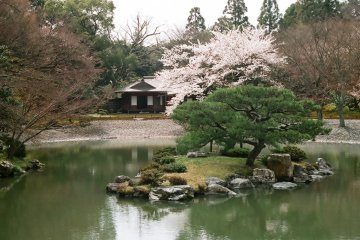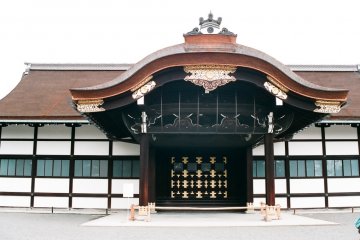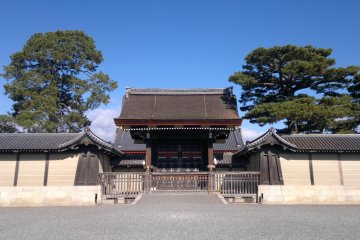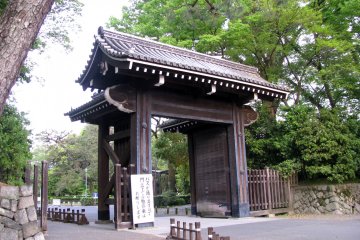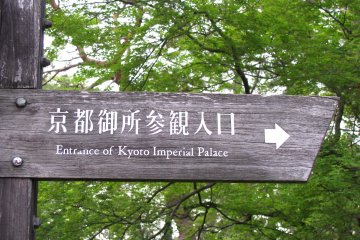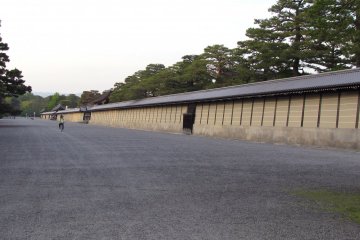Kyoto Imperial Park, also known as Kyoto Gyoen, is located in the centre of Kyoto. It is a spacious park stretching over 1300 metres long and 700 meters wide.
Kyoto Gyoen surrounds the Kyoto Imperial Palace. The palace was once the residence of the Imperial family until the beginning of the Meiji Restoration in 1868. From the park you can see the gates and walls, but you cannot go inside. The wide pathways are covered with gravel and turned out to be hard to walk on. After struggling for some time, my friend and I took off our shoes and walked on the grass instead.
The trees in the park are particularly gorgeous. Some of them are as thick and magnificent as sacred Shinto trees. Among the smaller trees, I saw a familiar bird cherry in bloom. It was Saturday and many people came to the park, including families and couples. Everyone we saw were either playing, reading or simply resting on the grass. My friend and I also sat down on the grass and had a good talk under the fresh spring leaves of the trees.
On the way out we examined the outer buildings of the palace. They were beautiful, but the present palace is the reconstruction built at the end of the 19th century as the former palace was burnt. Nearby is the home of Joseph Hardy Neesima, who devoted his short 46 year life to the foundation of Doshisha University, one that took Japan into the modern era, in a way that incorporated the best of the past, while enabling the country to take its place in the globe. The home used to host classes for the university and is a tangible cultural property.
Kyoto Imperial Park is provides free entry from 9-5 pm in summer and until 4 pm in autumn and winter. The park is closed on Mondays and from December 28 to January 4.



